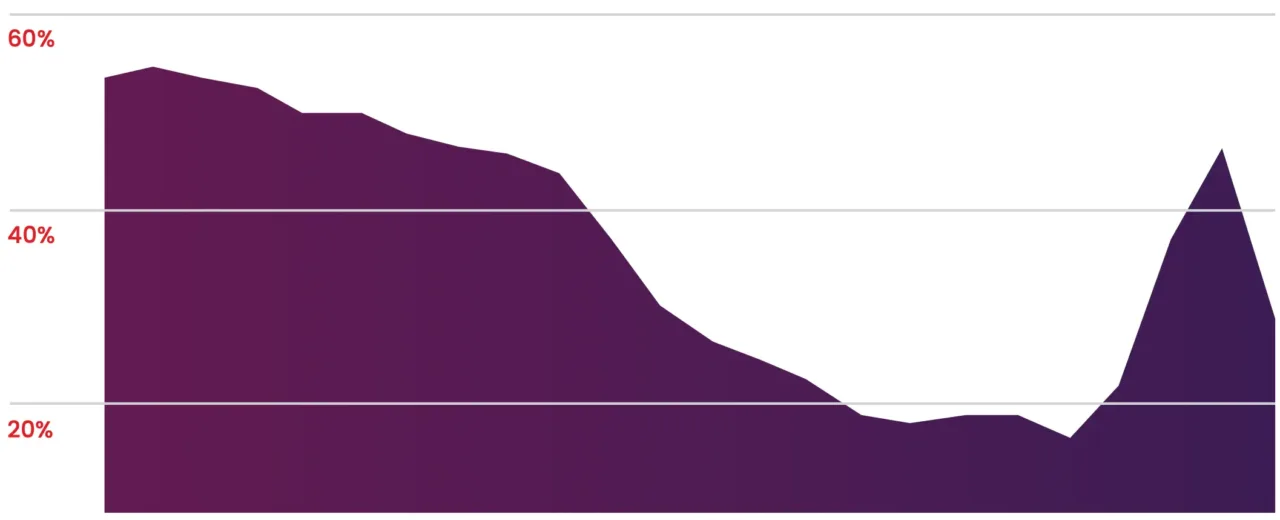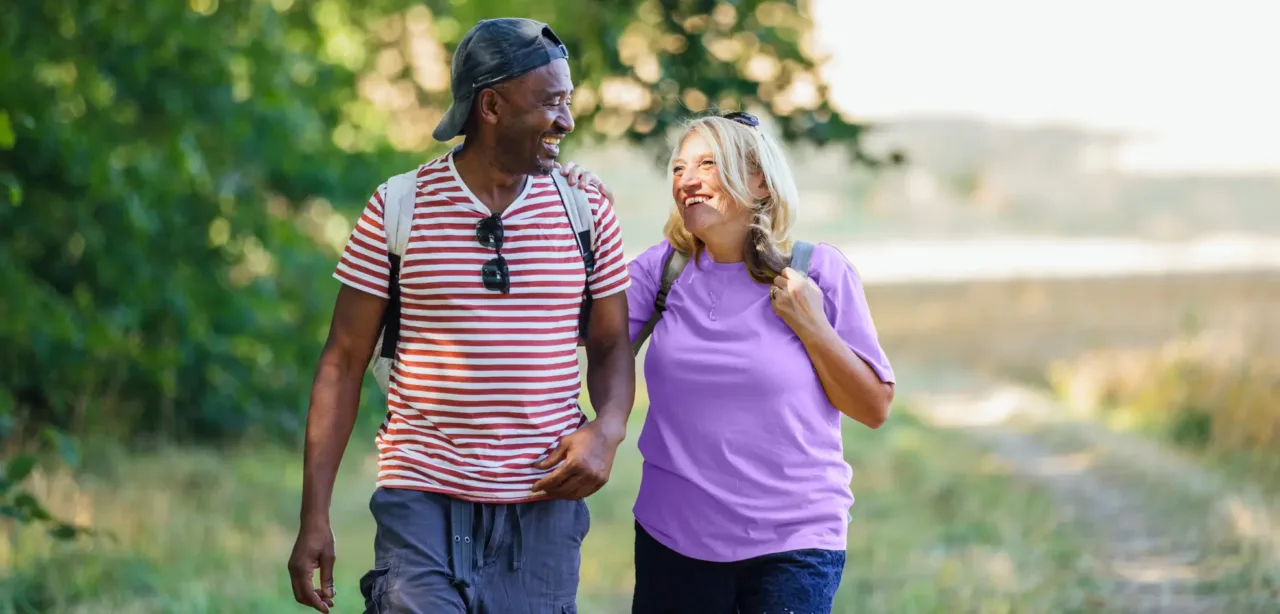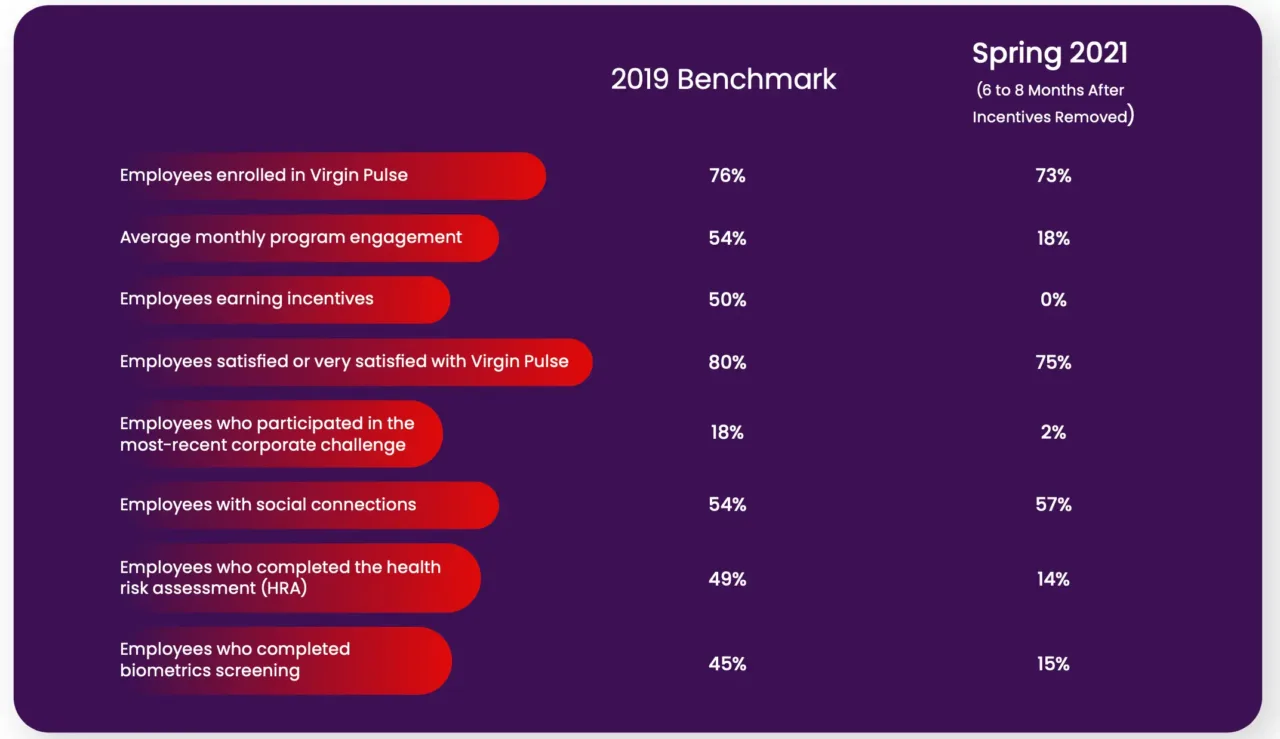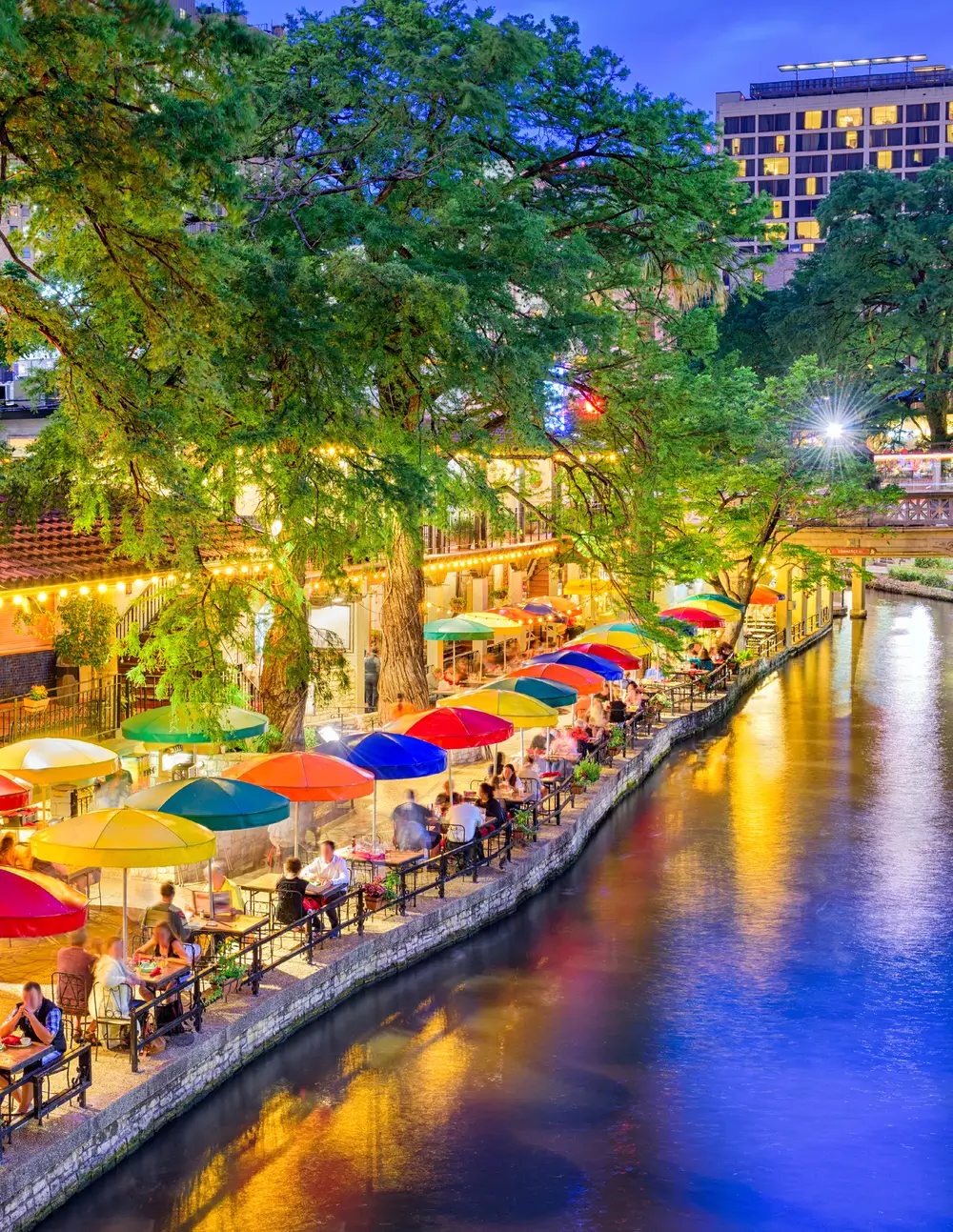Developing a Culture of Wellness at the City of San Antonio
San Antonio is the second-largest city in Texas, has a large Hispanic population and is a popular tourist destination due to celebrations like Fiesta, an annual 10-day party. David Whitt, Employer Wellness Manager at the City of San Antonio says this about his city, “We like our barbecue, our tacos, our Big Red and our beer and we love to celebrate. But that doesn’t always lend itself to healthy behaviors.”
In fact, South Texas, including San Antonio, has double the national average rate of diabetes and high rates of hypertension and obesity. In 2012, the City of San Antonio, which has 12,000 employees, introduced Personify Health to its wellness program to tackle these health issues and create a culture of wellness. They shifted from a having a hodge-podge of programs that didn’t work together to implementing a complete wellbeing strategy and program with Personify Health.
This new program included generous employee incentives to drive engagement in health and wellness activities. Fast forward to 2019 and 76% of eligible employees were enrolled in Personify Health and 49% of these employees completed an annual health risk assessment (HRA). Because of the City of San Antonio’s holistic approach to their wellness program, diabetes was no longer their number one health claim.
Quick Glance: City of San Antonio
- 12,000 employees over 50 business units
- Named one of the top 100 Healthiest Employers in the Nation
- Received the 2019 Healthy Workplace Recognition Program, Platinum Achievement
- Top health risks are hypertension, lack of physical activity and stress
- Core values: innovation, teamwork, integrity and professionalism
- Wellness program includes the Personify Health Engage platform (since 2012)
- Generous incentives program (average annual expenditure: $900,000)
- High engagement levels in the wellness program compared to benchmarks
Challenge
Removing Incentives Due to the Economic Challenges of COVID-19
The City of San Antonio spends about $900,000 in annual incentives for their wellness program and achieves engagement levels that surpass peer benchmarks. Senior leadership and the wellness team suspected that incentives propelled employee behavior towards predictive health activities like the annual HRA and biometrics tracking. However, they didn’t have data to support or reject this hypothesis until the era of COVID-19.
With COVID-19, the City of San Antonio changed how they worked almost overnight, including sending many employees to work from home. From a health and wellness point of view, employee behavior also changed overnight. Healthy habits, including nutrition and physical activity, were deprioritized, in-person wellness activities and promotions were no longer available and working from home reduced meaningful social interaction between colleagues. Increasingly, employees skipped routine trips to the doctor or hospital because “that’s where the sick people are.” These changes affected employee physical and mental health right away and throughout the pandemic.
From an organizational perspective, COVID-19 put budgetary pressure on the City of San Antonio, and they made cuts, including removing the monetary incentives from the health and wellness program, which equaled up to $500 per eligible employee per year. The wellness team hoped that incentives would come back—and they did, 12 months later—but at the time, they didn’t know if that was possible. In the meantime, they asked themselves, “Would the data support our hypothesis that incentives positively influence employee behavior?”
Wellness Program Challenges During COVID-19
- Incentives were removed for 12 months due to budget constraints
- Employees lost focus on healthy behaviors due to the challenges of working from home, reduced social interaction and changing priorities
- Employees avoided or postponed visiting the doctor for disease management and annual physicals
- Participation in the Health Risk Assessment and biometrics tracking dramatically decreased
Solution
Finding Incentive Alternatives to Drive Health and Wellness Behavior
After the City of San Antonio dropped incentives, their three-person wellness team noticed two immediate changes. The usual number of emails, texts and calls they receive about the wellness program turned into radio silence. The second immediate change they noticed was in themselves; they knew they needed a different approach to overcome the challenges presented during COVID-19. In collaboration with their Personify Health Customer Success Manager, they took an out-of-the-box approach to engaging employees. For example, they organized a virtual 5k through the Personify Health platform and switched from in-person wellness webinars to virtual, which increased the average attendance from 20 to 25 people to 300 to 400 people. They rolled out sleep and nutrition features on the Personify Health platform, ran check-in challenges to keep colleagues connected and leveraged the platform communication functions to create wellness moments. The wellness team promoted the program relentlessly in lieu of the in-person events they once relied on.
Wellness Program Challenges During COVID-19
- Wellness webinars shifted from in-person to virtual, increasing average participation from 20 to 25 attendees to 300 to 400 attendees
- Sleep and nutrition features were added to the program
- The 5k run went virtual
- The program ran check-in challenges to address mental health and help people stay connected with their formerly in-person colleagues
Hypothesis Confirmed: Incentives Drive Predictive Health Activities Including HRA and Biometric Tracking
Despite the program enhancements, consistent health and wellness communications and non- stop promotions, engagement with the wellness program decreased—though not in all areas.
This experiment proved the City of San Antonio’s hypothesis correct. For their employees, incentives increased participation in the annual HRA and use of their higi machines to enter validated biometrics into the Personify Health platform. The 2019 benchmark showed that 49% of eligible employees completed the annual HRA and 45% participated in biometric tracking activities. However, in the spring of 2021, six to eight months after the organization removed the incentives, participation in the HRA and biometrics tracking dropped to 14% and 15% respectively.
Participation in these two activities is important because the results give people a clear picture of their health risks, which is often the wake-up call necessary to inspire real change. These results also influence how people interact with the Personify Health platform because it’s customized to the needs of each employee. For example, if a biometric entry shows elevated blood pressure, the platform presents information and options about managing hypertension. The HRA provides insights on sleep, nutrition and physical activity habits which are predictors of physical and mental health concerns.
Monthly Engagement Percentage
29% of members engaged this month

Despite the program enhancements, consistent health and wellness communications and non-stop promotions, engagement with the wellness program decreased—though not in all areas. This experiment proved the City of San Antonio’s hypothesis
correct. For their employees, incentives increased participation in the annual HRA and use of their higi machines to enter validated biometrics into the Personify Health platform. The 2019 benchmark showed that 49% of eligible employees completed the annual HRA and 45% participated in biometric tracking activities. However, in the spring of 2021, six to eight months after the organization removed the incentives, participation in the HRA and biometrics tracking dropped to 14% and 15% respectively. Participation in these two activities is important because the results give people a clear picture of their health risks, which is often the wake-up call necessary to inspire real change. These results also influence how people interact with the Personify Health platform because it’s customized to the needs of each employee. For example, if a biometric entry shows elevated blood pressure, the platform presents information and options about managing hypertension. The HRA provides insights on sleep, nutrition and physical activity habits which are predictors of physical and mental health concerns. It’s important to note that, while some metrics decreased after the incentives were eliminated, they didn’t decline overnight. Instead, over a year without incentives, it was a slow trickle in a downward trend. However, there was also good news: the program launched new features, attendance at wellness webinars exploded and, even without incentives, employees remained satisfied with the wellness program overall and Personify Health specifically. Incredibly, employee attrition decreased by 13% during COVID-19 (surpassing peer attrition benchmarks). The City of San Antonio learned that incentives are an essential part of their wellness program as they boost participation in Health Risk Assessments and overall engagement in the program. Interestingly, they also found that salary doesn’t affect how employees feel about incentives. From minimum-wage to six-figure earners, healthy behavior increases when there’s money on the table. The incentives were recently brought back to the program and everyone, including employees, senior leadership and the wellness team, is thrilled about it. In fact, one month after the incentives returned, engagement levels went up to 47% (for the first time since June 2020), four percent higher than they were the month before incentives were eliminated. At the City of San Antonio, the culture of wellness continues!

How Eligible Employees Interacted with Health and Wellness Activities Before and During COVID-19

The City of San Antonio: 5 Lessons About Sustaining a Culture of Wellness During Difficult Times
Like most organizations, the City of San Antonio faced major challenges during COVID-19. Overnight, all business units and employees adapted to a new way of working and living. For the wellness program, incentives were eliminated for 12 months, which led to declining participation in health risk assessments and overall program engagement. However, employee satisfaction in the Personify Health program remained constant throughout.
Here are five things the wellness team at the City of San Antonio learned about sustaining a culture of wellness during COVID-19:
Work with your Client Success Manager
Don’t go it alone! Think of your Client Success Manager as your wellness partner and work together to find solutions to suit your employees and organizational objectives.
Speak the language of your employees and meet their needs
Take a marketing approach to promoting your wellness program, figure out what your audience cares about and craft your messages to meet those needs. Ask yourself, “What motivates our people?”
Limits inspire creativity
With no more incentives, the wellness team had to consider and create outside-the-box solutions to address new challenges. Some creative ideas, such as virtual wellness seminars, worked even better than the original solutions!
Incentives incentivize behavior so choose
The time without incentives confirmed that they increase participation in health risk assessments and biometric tracking, two behaviors that lead to improved health outcomes. Make sure your incentives are associated with activities that drive health improvements.
Never stop promoting your wellness program
Keep your wellness program front and center for employees for consistency and to show you care. Engagement fluctuates, but your promotions shouldn’t! Sarah Hagen, Personify Health Client Success Manager told the City of San Antonio’s wellness team, “You do a lot that other clients don’t. If you didn’t do your feet-on-the-street promotions, your employees either wouldn’t know about the program, or they wouldn’t find it important.”




